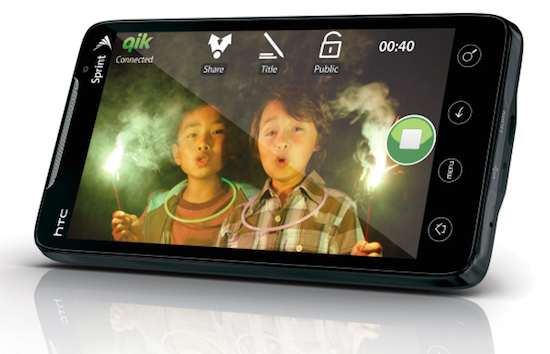Sprint Announces World’s First 4G Phone, HTC Evo – We Announce What “4G” Means
Sprint, the country’s third largest wireless provider, announced the HTC Evo today, showcasing the world’s first 4G phone at the communication industry’s annual CTIA event in Las Vegas. This new phone is by all accounts a beautiful beast, decked out with a 4.3 inch screen, two cameras, and Android 2.1; but more importantly, it is the first phone to run on a 4G network.
However, this souped-up phone raises one extremely important question: what exactly does 4G mean?
Simply put, 4G means fourth generation, implying that there were three generations of phones before today’s big announcement. And what that means is that it is time for a brief history lesson!
Jump forward to 2001 and Japan launches the world’s first 3G network, with Europe following in 2003 and America shortly thereafter. This allowed for the modern cell phones we see today, which can pull down website and email at acceptable speeds. The most commonly used 3G networks also allow users to access the internet while making a phone call – quite the boon for a road warrior with a dead laptop. While early 3G phones had somewhat uncomfortable web browsing experiences, the launch of the iPhone 3G and 3Gs has revolutionized the way people view mobile browsers, leading to the explosion of wireless data consumption that we have seen today.
4G lets users do some amazing things, with Sprint’s current implementation averaging speeds of 3 to 6 megabits per second, and bursts hitting 10 Mbps. That’s faster than some people’s home broadband! Activities that used to be painful on 3G, such as streaming videos or downloading large attachments, are now a breeze.
Another problem is data usage. Most supposedly “unlimited” plans cap users at about 5 gigabytes. If you go over, you get charged way more money. As Internet connections become faster, people are going to burn through their quotas quicker than ever, getting a nasty surprise in the mail a month later. Lastly, if too many people use 4G too quickly, the networks will get saturated, similar to what some iPhone users have been experiencing on AT&T. There simply won’t be enough capacity for everyone at the same time.
That said, the upsides vastly outweigh the downsides, making this new phone a very big deal for Sprint. In the last few years they have been struggling against much larger Verizon and AT&T, losing hundreds of thousands of subscribers each quarter. The HTC Evo may be Sprint’s best bet for turning its fortunes around.
Inside the Evo is a 1 gigahertz Snapdragon processor, 512MB of ram, and 1 gig of built in memory. On top of those screaming specs are a 480×800 display, as well as two (count em!) cameras, the better of which packs 8 megapixels. Running it all is the newest version of Android (2.1), as well as HTC’s Sense UI for a little extra eye-candy. All told, this looks like an amazing phone to finally make use of Sprint’s fancy new network, and it may just be their best bet for reversing their falling fortunes.
Have a tip we should know? tips@themarysue.com
